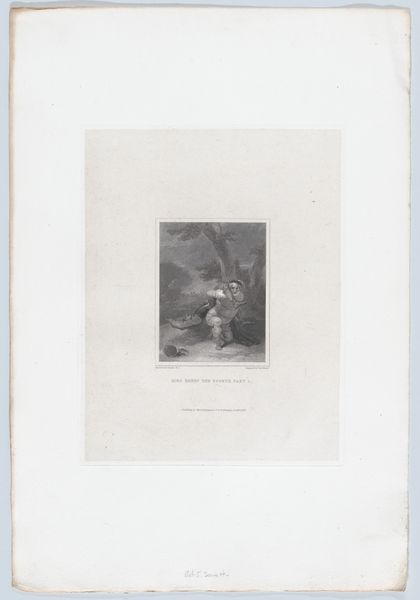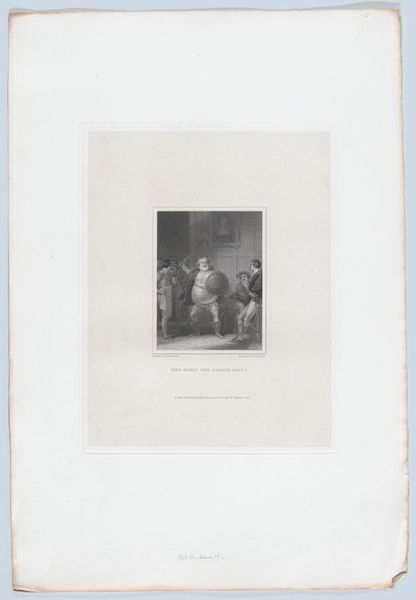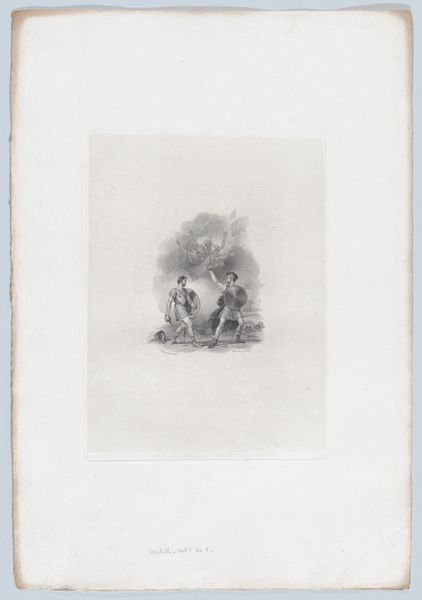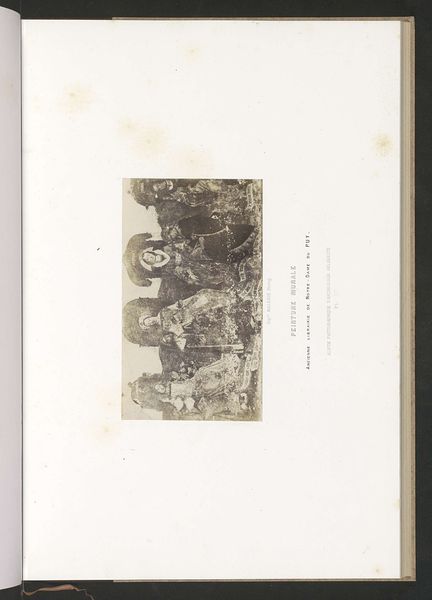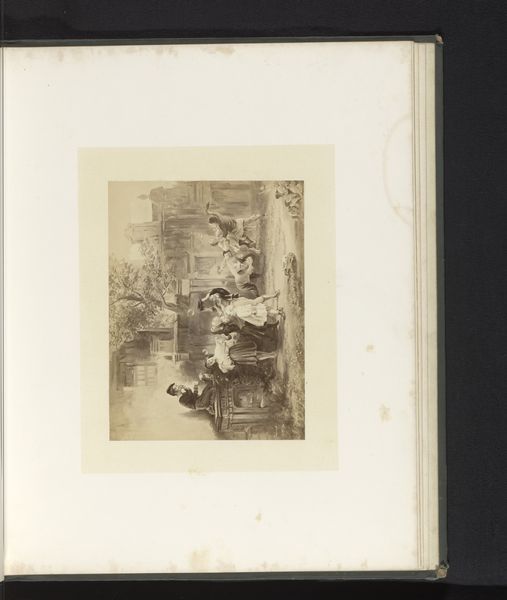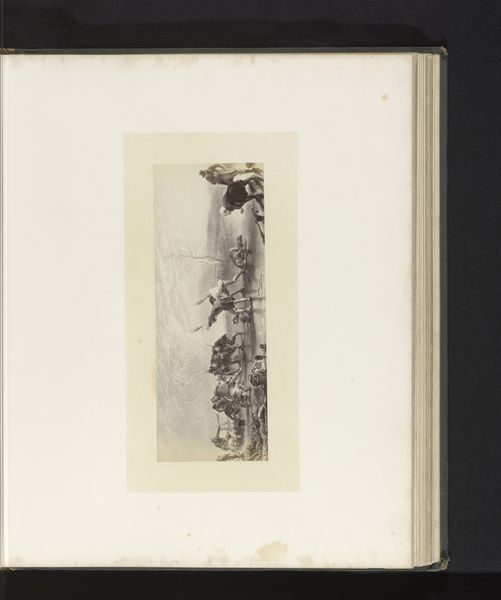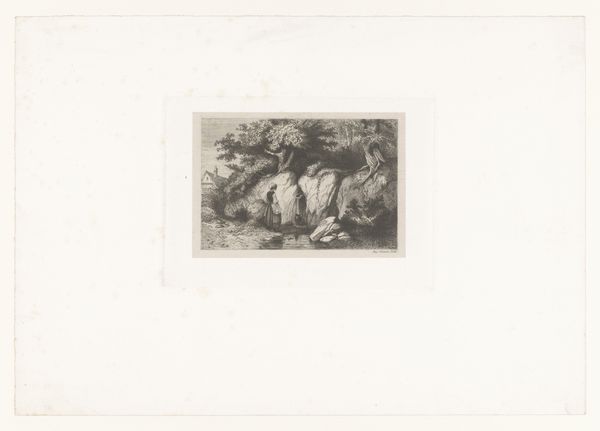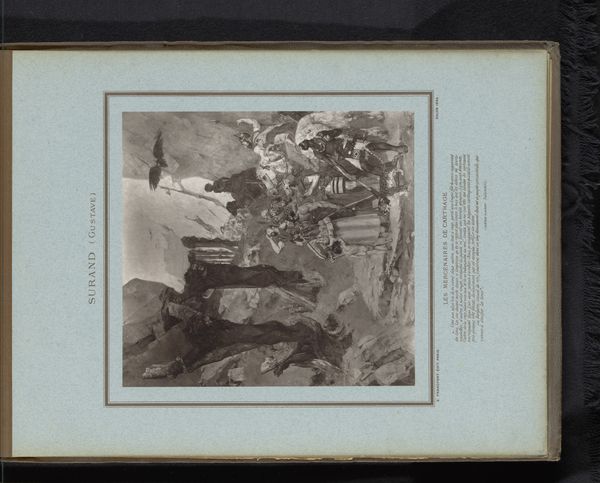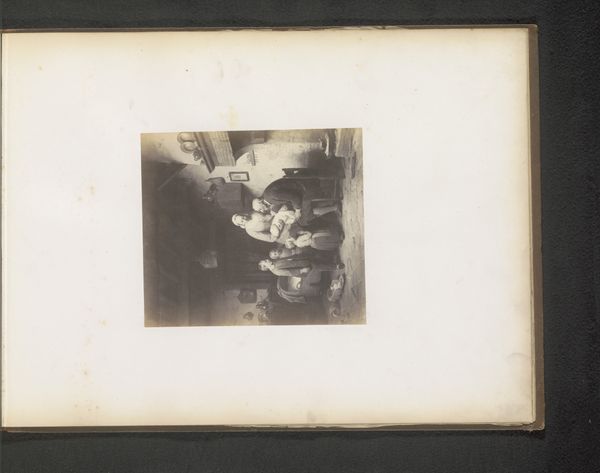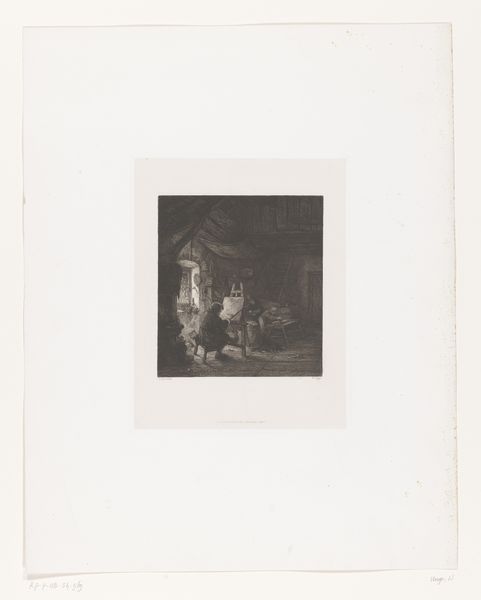
Falstaff and Bardolph, on a Road near Coventry (Shakespeare, King Henry IV, Part I, Act 4, Scene 2) 1825
0:00
0:00
drawing, print, paper, engraving
#
portrait
#
drawing
#
water colours
#
narrative-art
# print
#
figuration
#
paper
#
history-painting
#
engraving
Dimensions: Plate: 9 3/4 × 7 5/8 in. (24.8 × 19.4 cm) Sheet: 17 1/8 × 11 3/4 in. (43.5 × 29.8 cm)
Copyright: Public Domain
Editor: This is “Falstaff and Bardolph, on a Road near Coventry” from 1825, after Charles Heath the elder. It looks like a print, based on a drawing maybe with watercolors. It’s a simple, almost stark image; I wonder about the historical context beyond just illustrating Shakespeare. What do you see in this piece? Curator: I see more than just a simple illustration of Shakespeare. This print becomes a powerful reflection on social dynamics of its time. The positioning of Falstaff, a symbol of unchecked indulgence, and Bardolph, almost like a resigned subordinate, invites us to consider the class structures and the exploitation inherent within them. How does this power dynamic resonate with contemporary society? Editor: So, you're saying it is not only an image of two characters but an active commentary? Curator: Precisely! Consider the rise of industrial capitalism at that time. Falstaff could be interpreted as an embodiment of early capitalist greed, while Bardolph is representative of the exploited working class. How do you think their interactions, as portrayed here, reflect the broader anxieties about economic inequality and social justice during the Industrial Revolution? Editor: I hadn't considered it that way at all! The seemingly simple interaction takes on so much more meaning. Curator: Absolutely. Think about how the artist uses Shakespeare to subtly critique the present. Even their attire, their burdens, their shared journey—they speak volumes about the realities of that era. What could this artwork suggest about the intersection of art, literature, and social critique? Editor: Wow, I'll never look at Shakespeare illustrations the same way again. Thanks, that gave me a lot to consider! Curator: My pleasure. Let's both continue to look at art with the intention of seeing how it reflects historical truths.
Comments
No comments
Be the first to comment and join the conversation on the ultimate creative platform.

